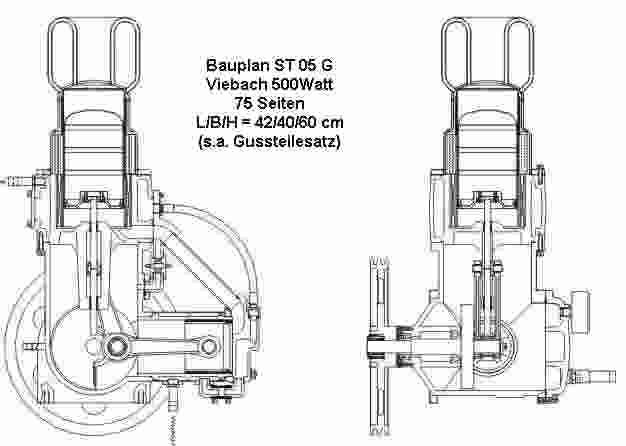Si asta tot pentru a plimba informatia de la unul la altul (cu tot cu acceptul persoanei respective):
"I don't think you want to worry too much about the particular technology
> unless you are limited for space. They all generate electricity and the
> main thing you want to consider is price although you need to add in
> the costs for mounting them .The lower efficiency ones will occupy
> more area for the same power rating and may need more mounting
> hardware.
>
> ?4.1/W seems like a good price. The scarcity of pure silicon
> has driven the price up for the last two years. The scarcity will
> not ease until 2008 when some big new factories making
> pure silicon begin production. Since Germany installed more
> photovoltaic capacity last year than the rest of the world put
> together and they manufacture panels there, it is likely that you
> will find the best price there.
>
> Not many large panels are sold directly to the customer in the UK.
> This is because most large systems are connected directly to the grid.
> The UK is very densely populated and has a very extensive electrical grid.
> Nowhere in England is more than 8km from a tarred road and only a tiny
> number of houses in the UK are not connected to the grid
> Nearly all systems not connected to the grid here are for uses
> such as boats and caravans. These tend to be less than 100W.
> To connect to the grid in this country requires that the system
> is fitted by someone who is certified as competent to do so. In addition,
> the Government offers grants of about 50% of the cost but to obtain the
> grant the whole system must be obtained from one of a small
> number of firms that are approved by the Government. Few people
> are willing to go without the grant to save money by buying their
> own panels.
>
> The system that I have (see attached photo) was supplied by
> Solar Century. This is a company set up by a Jeremy Leggett,
> a prominent environmental campaigner, who used to be chief
> scientist for Greenpeace and has written books such as 'Half Gone'.
> The system has 15 panels from Sanyo at 190W each. Sanyo use
> an unusual hybrid technology. They have a monocrystalline n-type base
> covered with a very thin intrinsic silicon layer and over that an amorphous
>
> p-type layer.Sanyo are second in the silicon efficiency competition just
> behind
> Sun Power Corp. Sanyo now offer 210W in 1320 x 895mm panel
> and Sun Power offer 220W in the same size panel. Sun Power's
> special feature is that both contacts are on the back which means
> there is no metal grid on the back. Some people like the look of this
> better and you can get completely black panels. I suspect however
> that for you price is the most important factor.
>
> You say that you will not be connected to the electricity grid in
> your new house. If you are going to supply all your electricity
> from photovoltaic panels you will need to store electricity.
> The cost of storage will probably be as much as the cost
> of the panels unless you have a cheap way of doing this.
> If you use rechargeable lead acid batteries and restrict the
> discharge to 80% of capacity to prolong their life you
> will probably pay about ?400 per kilowatt hour of storage
> and may be more for the ones designed for solar systems
> with a long cycle life. Even to smooth out the day to night
> variability you will need 6 or 7 kilowatt hours of storage
> for every kilowatt of photovoltaic power. That is about
> ?2600 for batteries for every kilowatt of photovoltaic panels
> You may need even more if you use a tracker and get
> more power per day. To smooth over a few cloudy days
> in a week you will need two or three times as much
> storage. This will bring the price up to ?6000 per kilowatt of
> panels
>
> If you want to store summer power for winter use you will
> need many times more storage and the price of the batteries
> will become the main cost of the system. Because
> Romania is further south than the UK you will get
> less variability between winter and summer. My map
> shows that Romania has about 5.5 times as much
> sunlight in June as it has in December. In the South
> of the UK were I am the ratio is about 8.5 (see attached log)
> It also shows you will get about 35% more sunlight per year
> in total than we do so I would expect that you would get
> about 1250kW hours per year per kilowatt of panels for
> a fixed south facing system tilted up at the ideal angle.
> The figure in the south of the UK is about 950kW hr
> per year and I get about 870kWhr per year (2400kWhr
> from a 2.75kW system) because I face nearer south east.
> To store just 15% of your annual power from the summer
> to use in the winter you will need to store 187kWhr of
> energy for every kW of panels. To store it with batteries
> will cost about 18 times the cost of the panels. Also
> batteries do not last as long as photovoltaic panels.
> Most lead acid batteries last no more than 2000 cycles
> at 80% discharge and the cheaper ones are worse than this.
> There are other battery systems that last longer such as
> lithium-ion but at present they are much more expensive.
> Is there a mountain close to the house that you can pump
> water up to give a pumped storage system?
>
> You say you are thinking of using a tracking system for cloudy
> days. With diffuse light there is not so much to gain with a tracker
> They are more of an advantage in direct sunlight. At my latitude
> a tracker would produce about 40% more electricity over the year,
> if the geometry of the sun were the only factor. However, in
> the UK, the early mornings and evenings tend to be more cloudy
> than the middle of the day and this greatly reduces the advantage
> of a tracker system. In places like Arizona where there is very little
> cloud they are more of an advantage. I am only thinking here of
> non-concentrator systems. For the systems that I was talking about
> on The Oil Drum that use lenses or mirrors to concentrate the sun
> several hundred times, trackers are essential.
> ,
> Which ever way you do it Photovoltaic systems are expensive.
> I would strongly recommend that you only use electricity for those
> things that must have electricity. Solar thermal systems are
> a much cheaper way of heating water than photovoltaic produced
> electricity. Money spent reducing the amount of electricity you use
> will probably be a much better investment than on a bigger photovoltaic
> system.
>
> I hope this helps and the best of luck with your new house
> and welcome to the EU
>
> Best Regards
> Nick Rouse"
Mi-a facut o recomandare asupra unor panouri Sanyo
http://www.sanyo.co....t_e/module.html si a subliniat importanta unui alt parametru al panourilor: influenta temperaturii asupra puterii generate:
"Hello Ghica,
Please use my text, I am pleased to be of some help.
I see the Euro symbols don't seem to have transmitted properly. I see also that I said the SunPower cells don't have a metal grid on the back, I meant on the front.
I had heard of the lead acid batteries using carbon but your link gave me a better idea of what they are doing.
Since they are still lead acid the active part of the electrodes must still be lead and lead dioxide but it looks like they are going to imbed these in porous carbon instead of grids of lead-antimony alloy.This will make it lighter but the claims they are making are more than I would have thought this change would make. We will have to wait and see if they can achieve this in production.
The Kyocera panels look excellent value for money The efficiency of 14.17% compares with the Sanyo HIT215W gives 215W in 1.24m² which is 17.20%
http://www.sanyo.co....t_e/module.html
and the SunPower SPR-220 gives 220W in 1.24m² which is 17.68%
http://www.sunpowerc...pdf/SPR-220.pdf
One of the advantages that Sanyo claim is that the output of their panels does not drop as much as their competitors when the panel gets hot. Sanyo say the output power of their panels drop 0.39% /°C. The power from the Kyocera panels loaded at the maximum power point of the V/I curve appears to drop at about 0.45% /°C
Thanks for the link to the maps. I have good ones of the UK for optimal angle panels and not so good ones for the world for horizontal panels. The link you sent me was gave much better resolution and optimal angle graphs. It is very sunny near Babadag and everywhere in Romania is at least 18% better than the sunniest bit of the UK, the south west tip,
Best Regards
Nick Rouse"

 Ajutor
Ajutor



 Raspuns nou
Raspuns nou


 Citare Multipla
Citare Multipla












